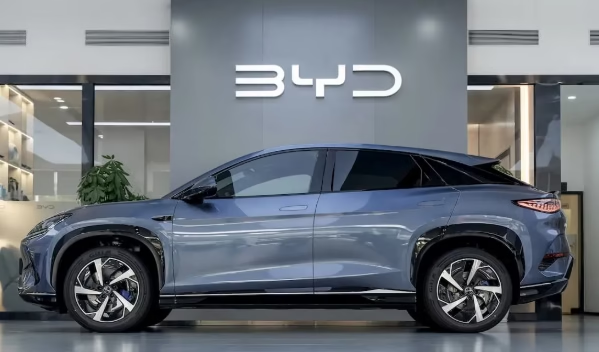Last month, a swarm of synchronized drones lit up the night sky above Rome’s Olympic Stadium, marking the European launch of Chinese automaker BYD’s latest electric hatchback. The glowing orbs outlined the new Dolphin Surf against a dark sky, against a backdrop of iconic landmarks like the Colosseum, St. Peter’s Basilica and the Pantheon — a cinematic image that alluded to the Fiat 500 and the postwar lifestyle it symbolized.
The message was clear and bold: BYD was coming with electric vehicles for the masses, a segment that its European peers had trouble nailing. The Dolphin Surf was designed to be the Fiat 500 or Volkswagen Beetle of the electric age — fun, accessible, and built to introduce millions of drivers to an electric vehicle experience, only this time with batteries.
Behind the Rome light show was a much deeper story. After a slow start, BYD is accelerating sales through sleek showrooms, aggressive pricing and dealer expansion that is starting to unsettle established rivals. BYD, China’s largest automaker, has surpassed Tesla in electric vehicle sales in Europe, expanded its hybrid lineup to suit consumer preferences and swooped in to hire as it builds a factory in Hungary and poachs executives from the region’s top automakers, according to an analytics firm.
It’s a high-stakes gamble in a region rife with red tape and rules that favor established brands like Volkswagen, Fiat and Renault. But BYD sees a rare opportunity: The shift to electric vehicles is breaking down consumer loyalties and carving out a 500 billion euro ($576 billion) market where the average price of an electric car is still twice that of China.
“If you can win here, it means you are extremely good in every aspect,” said Stella Li, BYD’s executive vice president and head of the company’s overseas business. In an interview, she pledged to invest up to $20 billion in the region. “Europe is our most important market.”
BYD reentered Europe in 2022 with a gleaming booth at the Paris auto show, but its sleek, high-end models have struggled to compete with better-known Tesla and BMW in electric-car-friendly countries like the Netherlands and Norway. BYD executive Li Ke: “If you can win here (in Europe), it means you are extremely good in all aspects.”
BYD’s European sales almost tripled in the first four months of 2025, according to market researcher Dataforce, which largely explains the company’s response. By 2024, BYD had shifted to smaller, cheaper models to attract younger buyers. The company followed the strategy that worked in Latin America while controlling its own import business, giving it the flexibility to quickly adjust sales and product mix, including quickly adding hybrid models. Li Ke brought in experienced European executives such as Maria Grazia Davino, the former head of Fiat parent Stellantis in the UK, who quickly reshaped BYD’s dealer network in Germany.
“They are rightly poaching people from established European automakers who understand how the business works. Everything is just right,” said Felipe Munoz, senior analyst at automotive research firm JATO Dynamics. “Their product line is growing every day and the products are very competitive.”
BYD seeks to join the ranks of Europe’s top automakers
BYD’s ultimate goal is to take a seat in the European automotive system, placing the Chinese automaker’s flag alongside Volkswagen Group, Stellantis and Japanese and Korean manufacturers that have spent decades building influence. Achieving this goal will advance China’s overall strategy to dominate key manufacturing sectors, including electric vehicles, robotics and clean energy, and mark China’s central position in the 21st century automotive industry.
















Leave a Reply